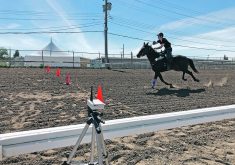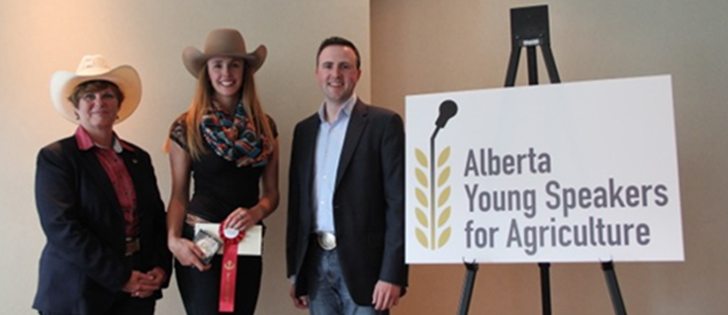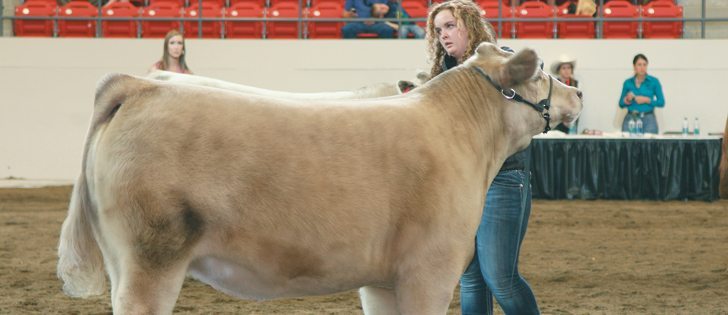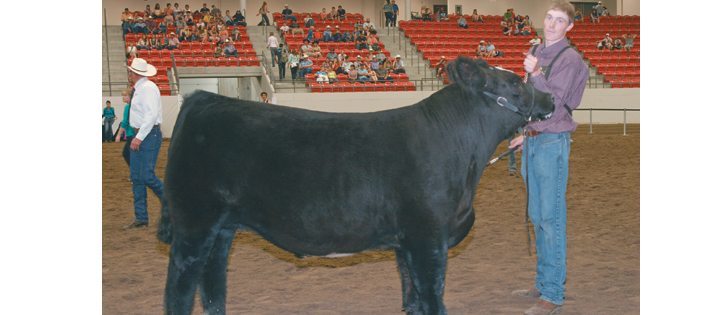Blood testing protocol | Policy examination comes after case of disqualified steer
The Calgary Stampede will review its steer show rules following the controversial disqualification of a winning steer after it tested positive for drugs.
“We would consider some ongoing enhancements for this competition including automatically testing both the grand and reserve champion,” said Stampede corporate communications director Kurt Kadatz after the Stampede’s Agriculture Review Panel upheld the Stampede’s original disqualification of a steer owned by Royden Anderson of Didsbury, Alta., and Riley Chalack of Carstairs, Alta.
The Stampede also plans to review its protocols on how long to keep blood samples.
Read Also

Lending policy still focused on primary producers: Farm Credit Canada
Farm Credit Canada said it has not changed its business practices and remains committed to supporting all producers, after a report from an Ottawa-based media outlet claimed otherwise.
Samples drawn from the top two steers were sent to Maxxam Analytics’s equine blood testing laboratory in Burnaby, B.C. The samples were destroyed before they could be retested in another laboratory.
Alastair Cribb, dean of the University of Calgary’s Faculty of Veterinary Medicine, and a consultant to the Stampede on their appeal panel, said the Stampede needs to improve its blood testing rules.
Cribb said in human drug testing there are A samples and B samples. If the A sample is positive, then the B sample can be retested.
But the blood sample taken from the winning steer was destroyed before the owner had the option of retesting.
“No doubt they have to review this,” said Cribb.
The Stampede turned to Cribb for clarification around the drug testing procedures during the appeal process.
The dean said an equine lab is capable of determining the presence of a drug but not the amount.
Finding a drug in the animal could have simply been bad luck, but finding two gave the Stampede reason for suspicion.
Kadatz said the Stampede is not claiming a specific concentration of drug, only that a drug was present.
Patricia Dowling, professor of Veterinary Clinical Pharmacology with the Western College of Veterinary Medicine in Saskatoon, said she does not believe bovine blood samples tested using horse samples would yield valid results.
“This cross-species analysis is completely unacceptable,” Dowling wrote in her paper to the appeal panel.
“I am suspicious they didn’t give (Cribb) all the information.”
Dowling is also co-director of a national food safety database and an expert witness for horse organizations such as Equine Canada and the Canadian Pari-Mutuel Agency where she has helped to establish drug-testing protocol.
Dowling said bovine samples sent to equine labs at other shows have been tossed out of court.
“This has happened before where they use a horse assay. It does not fly in a court of law,” she said.
“It’s a real shame. I don’t want to go up against the dean. I will respectfully disagree, but I have the weight of science behind my facts.”
Veterinarian Roy Lewis said the ruling makes his job as steer show veterinarian almost impossible. Instead of following the Canadian Food and Inspection Agency rules for drug withdrawal times and maximum drug residue levels, he needs to be concerned about giving show animals any drugs.
“It means you can’t treat with anything. You don’t know what the level of testing is at, even if the drug has an approved withdrawal time,” said Lewis, of Millarville, Alta.
“This makes a mockery out of testing. Technically the animal is almost never free of drugs if they have been exposed in their lifetime,” said Lewis.
The steer tested positive for ibuprofen and flunixin, the active ingredient in Banamine, an anti-inflammatory medication.
Originally the owners said they gave Banamine to the steer on the recommendation of the Calgary Stampede veterinarian. Later, they said they never gave the animal Banamine during the show, but only sometime before the event.
Stampede agriculture director Max Fritz said it is up to the owners to manage their health and drug protocol.
“We’re about detection and those animals being presented to the show have to be free and clear of any drugs show day. We realize the information that has been provided to us over the past six weeks it has been inconsistent. They suggested they didn’t give any drugs to the steer at the show. Regardless if it’s off farm, here at the show, they’re fully accountable for the management of that steer.”
Anderson said he is disappointed and said the decision is a concern for everyone showing animals at future Calgary Stampede steer competitions when an animal can be disqualified for trace amounts of drugs, possibly given months before the show.
The Stampede will make a decision before Oct. 31 on further sanctions for Anderson and Chalack.
Fritz said the rules are clear. If a substance was found in an animal, the owners would be disqualified and banned from future competitions at the Calgary Stampede.















